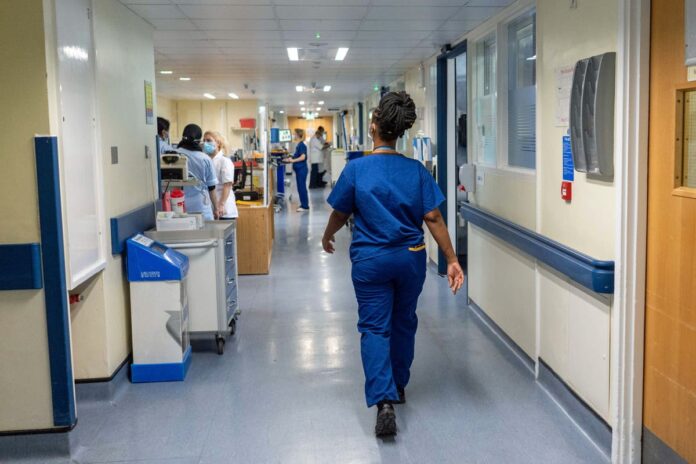Staff turnover in NHS cancer services has risen significantly, with more than 4,000 leaving the workforce last year, new figures show. Data from NHS England shows the leaver rate for the cancer workforce in hospital and community health services hit 12.1% in the year to September 2022, as 4,378 staff left. It was an increase from 10.4% the year before and the highest rate since at least 2010, analysis by the PA news agency’s RADAR service shows. The figures also revealed that nearly one in five (19.7%) staff were aged 55 or over last year. When are politicians going to start truly listening to the pleas of desperate, overstretched NHS staff and critically ill patients? Steven McIntosh, Macmillan Steven McIntosh, Macmillan Cancer Support executive director of advocacy, said: ‘We’re seeing record numbers of cancer care staff leaving the NHS and many coming up to retirement in the next 10 years. ‘When are politicians going to start truly listening to the pleas of desperate, overstretched NHS staff and critically ill patients? What are they waiting for? Governments can redress this but only if they act now.’ Kruti Shrotri, head of policy development at Cancer Research UK, said years of underinvestment in cancer services and a failure to grow the workforce has resulted in high turnover. She said: ‘Cancer survival in England lags behind similar countries and cancer waiting targets continue to be missed. ‘The solution lies in the hands of the Government who must show leadership and ensure we have a cancer workforce fit for the future.’ It comes as new analysis from Macmillan suggests the number of people being seen by a specialist for suspected cancer since 2010 has grown almost four times faster than the number of NHS cancer staff. The NHS workforce has never been bigger, and we have made significant progress in developing and growing the cancer workforce Department of Health spokesperson According to NHS figures, there were about 36,862 staff working in the cancer workforce in September of 2022 – up 54% from 23,970 staff in 2010. Meanwhile, an average of 236,474 people were seen by a specialist following an urgent GP referral each month of last year. It is a 191% increase compared to 81,244 people in 2010. Macmillan said that, without clarity from the Government, it was concerned many more NHS professionals will leave the workforce, which could lead to waiting times for treatment and diagnosis getting even worse, putting more cancer patients’ lives at risk. A Department of Health and Social Care spokesperson said: ‘The NHS workforce has never been bigger, and we have made significant progress in developing and growing the cancer workforce. ‘But there is more to do. Our recently published Long Term Workforce Plan will deliver the biggest training expansion in NHS history, recruit hundreds of thousands more staff and address staff leaving rates, which are already decreasing.’ Mr McIntosh said the workforce plan for England outlines ‘promising’ commitments, but it lacks crucial detail around what it will mean longer-term for the cancer workforce and people living with cancer. He said: ‘We urgently need to see detailed modelling on the cancer workforce, including details of how the missing roles will be recruited, delivered and funded. ‘Alongside this, we need information on how the UK Government intends to address the retention of staff, as many of the retention measures announced are not new and have not worked.’
Turnover in NHS cancer workforce highest for more than a decade – figures
Sourceindependent.co.uk
RELATED ARTICLES


